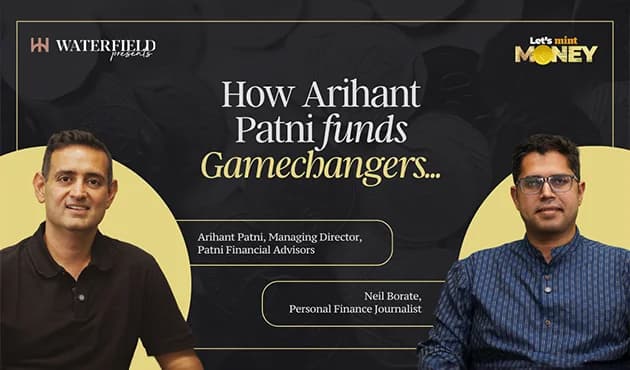Distribution is storytelling; Advisory is walking the talk
article • Investment Management

Waterfield Advisors
2021-08-18 |
Separating The Wheat From The Chaff
Understanding the fundamental differences between wealth advisory firms, distribution-led wealth management firms and banks, can help HNIs navigate through the growing uncertainty. The formats may seem similar to the untrained eye but they are very distinctive in their workings and approach. The distinctions between the two formats may seem complex but, there is a simpler way to understand this.
The truth lies in the objectives of the firm. Is it managing client interests to earn and uphold their trust? The two formats of wealth management are widely different. A distributor may fully intend to protect the best interests of the client but in the end, their revenue isn’t fueled by goodwill. An advisor on the other hand aligns with the clients long term interests, focusing on what is best for them and their portfolios.
Setting & Meeting Expectations
Holistically, an advisory business is about setting the right expectations with clients and focusing on managing those. Discussions, guidance, and regular client involvement in decision making is a key part of the experience. Advisory is charting the journey of the portfolio and walking the talk with clients to achieve the objectives set out at the start of the relationship.
A distributor can paint a rosy picture, earn their commission by telling the investor what they want to hear. To an advisor, this approach would mean disaster because while it nurtures the relationship, it does not deliver on the promise of wealth retention or generation. Simply put, a distribution business has the luxury of building conviction and encouraging a comparatively short-sighted outlook amongst their clients. Their mandate is to "sell" and this is sadly often at the cost of risking real world losses.
That said there are conscientious distribution-based firms who do attempt to offer a similar experience to their users. This may be ideal for retail investors who are new to investing and genuinely cannot afford seasoned advisory firms. However, when it comes to HNIs the risk of erring is higher than the cost of advisory.
Finding & Keeping The Balance
In the world of wealth management, there is a major need for this balance. One may come across families with complex structures, needs and objectives. Even if all factors except one are the same, one cannot always extend the same solution to two different investors. The idea here would be to spend time understanding their thought process and working on solutions that would help create a robust portfolio that can hold its own in rough seas.
A good partner for your wealth generation journey is someone who understands the kind of products that would be an adequate fit for the portfolio. The viability of the financial product and its place in your portfolio must be their top priority. This is where an advisor with a no-conflict model becomes almost invaluable.
Distributors seem to have found a lucrative way to package daily ins and outs into the market but what has always proven to be effective in the long run is a disciplined and staggered manner of investing based on a well thought out asset allocation strategy. Such packaging may generate results on occasion but is no match to a strong understanding of the cycles of the economy and positioning of the portfolio to withstand those cycles in a disciplined manner.
The Cost Of Feeless Investing
We have all heard that nothing in the world is truly free, living in times when we are scrambling for air, this analogy hits close to home. It is important to not take a wealth advisor who does the due diligence for granted. When you look at factors like reinvestment risk and transaction volumes, this becomes evident.
Transaction volumes are an area of major difference between the distribution model and the advisory model. A distribution-based firm thrives on bulky transactional volumes, this blatantly ignores reinvestment risk. The sort of risk a seasoned advisor shields you from by considering it at the very outset. Extensive research is required to ensure transactions happen systematically and in a manner that reduces such a risk in the portfolio. It is a risk that deserves attention and consideration.
Distribution based setups flourish simply because there is no direct fee that one has to pay. It is a fundamental human bias to opt for instant gratification over long term benefits. Psychologically that may even seem like a win-win for some as their portfolios are getting exposure to the latest product in the market and there is no actual fee that they must account for at the same time.
Writing a cheque to an advisory firm still seems like a cost to many. Considering the storm that the market has weathered in 2020, it has become extremely important to understand why engaging with a 'fee-charging' advisor is indeed a wise investment. It is not just the portfolio strategy and timely deployments that advisors take care of, but also ensure that their clients understand why those recommendations are being made and how it will impact the portfolio in the long run. The top 1% already understand this and this wisdom will soon percolate down to broader market segments. In the end, there is no substitute for diligent research.














